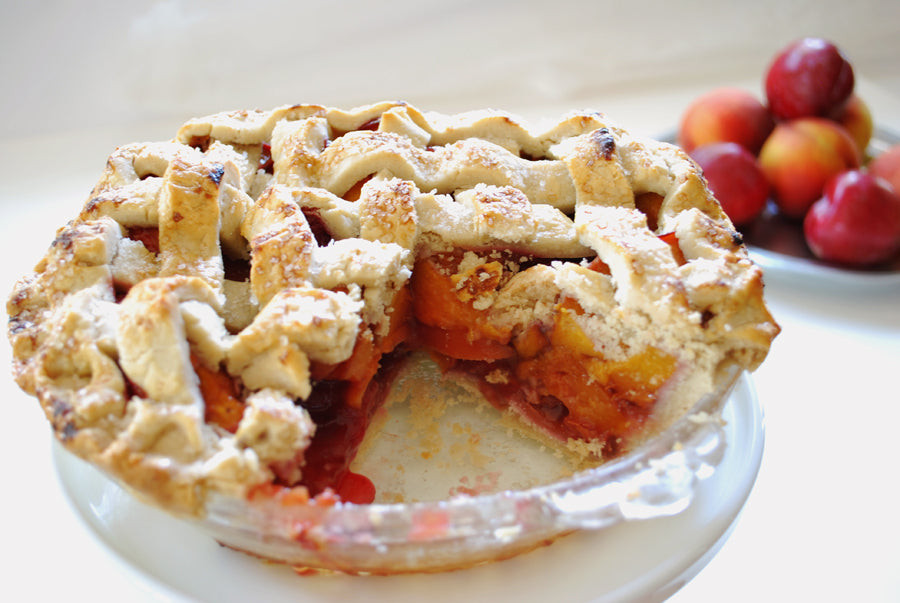This is a classic pie crust that can be used in any traditional pie recipe.

- 2½ cups Pamela's Artisan Flour Blend
- 1 tsp salt
- 1 tsp sugar
- 8 TBSP shortening, chilled and cubed
- 8 TBSP unsalted butter, cubed and chilled
- 1/3 cup ice water + 1 tablespoon if necessary
- Cream for brushing pie dough before baking (optional)
Yield: Two 8 inch pie crusts, or one pie with a top and bottom crust
Pre-heat oven to 425°.
In the bowl of a stand mixer, whisk together flour, sugar and salt. With paddle attachment, pastry blender, or using fingers, cut butter and shortening into dry mixture until pea-sized crumbs are formed. Slowly add ice water just until dough comes together (not sticky). Add 1 TBSP additional water at a time if dough is too dry. Do not over-handle dough.
For a double crust pie:
Divide dough roughly into two portions: 2/3 for the bottom pie crust and 1/3 for the top pie crust. Roll between sheets of parchment paper or plastic wrap, to about 1/8" thick. Peel off top layer of plastic wrap or parchment paper and invert into lightly greased or sprayed pie plate, and fix into pie plate. Peel off second sheet of wrap. (Cover and chill if dough is too soft.) Take the 1/3 pie dough and roll out into a circle the diameter of your pie plate. Invert the crust on top of the filled pie, remove wrap and fix edge. Cut a couple of slashes in the top to let the steam escape. Bake according to the filled pie recipe that you are using, in bottom third of oven.
For a single crust pie:
Divide dough in half and follow instructions above. Recipe will make two 8-9 inch single pie crusts. Bake according to the filled pie recipe that you are using, in bottom third of oven.
For pre-baked shell:
Same as process above, but dough will make two bottom crusts. Bake for 15 minutes at 425° in bottom third of oven, then turn down oven to 375° and continue baking for 10 to 15 minutes or until brown.
Dough may be frozen for later use; wrap in plastic and freeze, and thaw completely while still wrapped before use.
© Pamela's Products, Inc.



